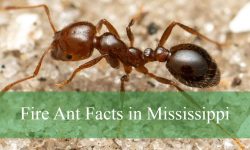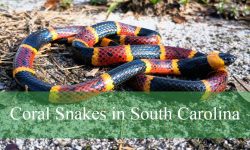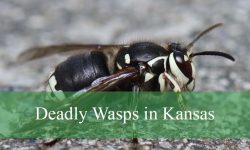Brown recluse spiders in Texas have a reputation that often overshadows their real biology. They are certainly venomous, and their presence in homes can feel alarming, but much of what people believe about them comes from myths rather than facts. These spiders live quiet, unobtrusive lives in dark corners, sheds, storage spaces, and undisturbed patches of Texas homes. Their movements are subtle, their webs minimal, and their daily routines carefully shaped around avoiding detection.
Texas’ warm climate, dry air, and abundance of sheltered indoor spaces create ideal conditions for brown recluses to thrive. Yet despite living close to humans, they rarely show aggression. Instead, their survival relies on stillness, hiding, and careful use of venom—tools refined by evolution for hunting small insects, not confronting people.
Below are ten detailed facts that reveal the true nature of brown recluse spiders in Texas, separating biological reality from common misconception.
1. Brown Recluses in Texas Have Venom Designed for Precise Tissue Breakdown

Their Venom Is Necrotic, Not Neurotoxic
The venom of a brown recluse works by breaking down cell membranes and soft tissue, which is very different from a neurotoxin. When the spider bites prey—typically small insects—the venom dissolves tissue rapidly, allowing the spider to feed through external digestion. This mechanism gives the spider access to nutrients with minimal physical struggle.
For humans, the same mechanism can cause localized skin damage.
The reaction depends on how deeply the venom spreads and individual sensitivity.
Bites Occur Mostly When the Spider Is Pressed
Brown recluses rarely bite unless they are pressed against the skin, such as when someone puts on clothing stored in a box or reaches into a dark corner. They do not bite out of aggression, and they do not actively pursue humans.
Most bites result from accidental contact.
The spider uses venom sparingly.
Not All Bites Cause Severe Reactions
Although necrotic wounds are the most widely known effect, many brown recluse bites result in only mild redness or irritation. Severe reactions happen when venom reaches deeper tissue layers.
Reactions vary significantly from person to person.
The “worst-case scenario” is far less common than people think.
2. Their Distinctive Violin Marking Is Visible but Easily Misunderstood
The Violin Shape Is on the Cephalothorax
The brown recluse’s most famous feature is a violin-shaped marking on its upper body. However, the marking varies in intensity and clarity. In some individuals, it is bold and dark; in others, it appears faint or incomplete.
The marking is an identification tool, not a behavioral trait.
Appearance can vary with age and molting cycles.
Other Spiders Are Commonly Mistaken for Recluses
Texas hosts many harmless brown spiders that resemble recluses—orb weavers, wolf spiders, sac spiders, and funnel weavers. Misidentification creates unnecessary fear and leads many to mistakenly assume infestation.
Careful examination is required for positive identification.
Leg structure and eye arrangement are more reliable than color.
The Eye Pattern Is the Most Diagnostic Feature
Brown recluses have a unique six-eye arrangement in pairs. Most spiders have eight eyes. This feature is one of the best ways to determine whether a spider is truly a recluse.
The eye pattern is more consistent than the violin marking.
It is the first thing arachnologists check.
3. Brown Recluses in Texas Thrive Indoors More Than Outdoors
They Prefer Stable, Indoor Microclimates
Texas homes provide a consistent temperature, dry air, and ample hiding places—conditions brown recluses prefer. Garages, attics, basements, and closets are ideal environments. Outdoors, they often hide in wood piles, debris, or abandoned structures, but indoor habitat is far more reliable.
Indoor populations can be surprisingly long-lived.
Their survival depends on undisturbed shelter.
They Do Not Spread Randomly Through the House
Despite popular belief, recluses do not wander around in open spaces. They move through established pathways—behind furniture, beneath floorboards, or inside wall voids. Most stay in the same hidden zone for months.
Their movements follow habitual routes.
They avoid open floors and bright lights.
Large Infestations Can Still Go Unnoticed
Brown recluses are incredibly good at avoiding detection. Even homes with long-term populations rarely see active spiders. The spiders hide during the day, come out at night, and leave minimal evidence behind.
They create few webs.
Their presence is often silent and invisible.
4. Brown Recluses Build Minimal Webs Used Only for Shelter, Not Hunting
Their Webs Are Irregular and Hidden
Unlike orbital web builders, brown recluses construct small, messy webs primarily for retreat and protection. These webs are typically built in corners, under furniture, or inside storage boxes. They do not use webs to capture food.
The web is a shelter, not a trap.
Its size and placement make it hard to notice.
They Are Nocturnal Hunters
Because they do not use webs to catch prey, brown recluses hunt at night, exploring dark spaces for insects, silverfish, and small arthropods. Their movements are quiet and precise.
They consume pests that would otherwise survive freely indoors.
Their hunting reduces household insect populations.
Webs Often Accumulate Dust Over Time
A brown recluse web does not shimmer or appear fresh. It collects dust quickly because it is seldom disturbed. This dusty appearance is actually one of the clues that the web belongs to a recluse.
The web stays hidden as long as it remains undisturbed.
5. Brown Recluses Have a Slow, Steady Reproductive Cycle in Texas Homes
Females Can Lay Multiple Egg Sacs Each Year
Each sac contains dozens of eggs, but survival varies with environmental stability. In calm, undisturbed areas like closets or attic corners, many spiderlings can survive.
Texas climates favor reproductive success indoors.
Stable temperature helps eggs incubate safely.
Spiderlings Stay Near Their Birthplace
Young recluses emerge gradually and remain close to the web for weeks. They feed on tiny insects and molt several times before becoming mobile hunters.
Their early survival relies on access to micro-prey.
Population Growth Occurs Silently
Even with multiple egg sacs, recluse populations grow slowly. Their reclusive nature and low mobility keep them confined to specific rooms or storage areas.
Large populations rarely spread house-wide.
They remain centered around consistent shelter.
6. Brown Recluses Rely on “Stillness” as Their Main Defense Strategy
Freezing Helps Them Avoid Detection
When approached or exposed to light, brown recluses often freeze completely. They do not bolt like wolf spiders or jump like jumping spiders. Their instinct is to become a small, unmoving shape in hopes of avoiding confrontation.
Stillness is an evolutionary advantage.
It keeps them hidden in cluttered environments.
They Move Quickly Only When Necessary
If freezing fails, they may dart into cracks or beneath objects. Their bursts of speed are short but effective in escaping harm.
Movement is a last resort, not a defensive posture.
Their Shy Nature Contradicts Their Fearsome Reputation
Brown recluses do not seek confrontation. They prefer abandonment of territory over defending it, even against much smaller opponents.
Their name truly reflects their behavior.
7. These Spiders Are Highly Resilient and Can Survive Extended Starvation
They Can Go Months Without Food
Brown recluses can survive long periods without a meal, especially in the dry climate of Texas. They slow their metabolism and conserve energy by staying hidden.
This helps them survive in low-prey environments.
Water Is More Critical Than Food
While they can go without food, prolonged absence of moisture is more limiting. Most obtain moisture from prey or condensation in sheltered areas.
Humidity affects their distribution within a house.
Starvation Does Not Make Them Aggressive
Some people believe hungry recluses become more likely to bite. In reality, hunger does not increase aggression. They continue avoiding confrontation regardless of conditions.
Behavior stays consistent even during scarcity.
8. They Are Expert Navigators of Tight, Hidden Spaces
Their Body Shape Favors Narrow Crevices
Brown recluses are slim, lightweight, and long-legged. This structure allows them to slip into cracks behind baseboards, light fixtures, storage boxes, and furniture seams.
They thrive in cramped environments.
They Prefer Vertical Surfaces and Corners
Corners provide shelter, webs, and escape routes. These locations allow them to avoid open movement across exposed floors.
Corners function as natural microhabitats.
This Adaptation Makes Them Hard to Remove Completely
Even thorough cleaning may not reach every void or crack. Their body shape allows them to remain in locations inaccessible to household tools.
This is why infestations require targeted control rather than general cleaning.
9. They Are Beneficial Pest Hunters Despite Their Reputation
They Feed on Household Pests
Brown recluses hunt silverfish, roaches, clothes moth larvae, and other small insects. Their presence can indicate a home with ample pest populations.
They indirectly help reduce other household pests.
They Keep to Themselves While Hunting
Most of their hunting happens unnoticed in corners or beneath objects. Humans rarely see them catch prey.
Their stealthy movements minimize disturbance.
They Consume Insects That Damage Clothing and Books
Some of their preferred prey feed on fabric, paper, or dried goods. Brown recluses actually protect belongings from other pests.
They play an understated but beneficial ecological role.
10. Misidentification and Myth Have Greatly Exaggerated Their Danger
Many Reports in Texas Are False
People often mistake harmless house spiders for brown recluses, leading to false alarms and unnecessary fear. True brown recluses have distinct traits not shared by most common house spiders.
Misidentification magnifies their perceived threat.
Stories of Widespread Aggression Are Exaggerated
Brown recluses do not roam aggressively nor seek out humans. Most myths—such as spiders hiding in shoes waiting to bite—are dramatized misunderstandings of their behavior.
Fear, not biology, fuels these stories.
Real Bites Are Far Rarer Than People Think
Despite millions of Texans sharing living spaces with these spiders, confirmed bites are relatively rare. Their shy, stationary nature keeps interactions minimal.
The spider’s reputation exceeds its actual impact.
FAQs About Brown Recluse Spiders in Texas
Are brown recluse spiders common in Texas?
Yes, especially in central and northern regions, including Dallas, Austin, Waco, and Fort Worth.
Are their bites always dangerous?
No. Many bites cause mild symptoms; severe necrosis is uncommon.
Do they bite humans deliberately?
No. Bites occur almost exclusively through accidental contact.
How can I identify a true brown recluse?
Look for the six-eye pattern arranged in pairs and the violin-shaped marking on the cephalothorax.
Do they live in beds or clothing?
Only if clothing or bedding is left undisturbed for long periods.
Where do they hide indoors?
Attics, closets, storage boxes, garages, and behind furniture.
What do they eat?
Small insects such as silverfish, roaches, and moth larvae.
Conclusion
Brown recluse spiders in Texas inspire more fear than nearly any other household creature, yet most of that fear comes from misunderstanding. These spiders lead quiet lives in hidden corners, relying on stealth, restraint, and efficient hunting rather than aggression. Their venom is medically significant, but bites remain far rarer than myths suggest.
Understanding their biology—how they hunt, where they hide, and how they behave—allows Texans to coexist safely with one of the state’s most misunderstood residents. Rather than being monsters lurking in the dark, brown recluses are small, shy predators performing a subtle role within Texas homes and environments.






